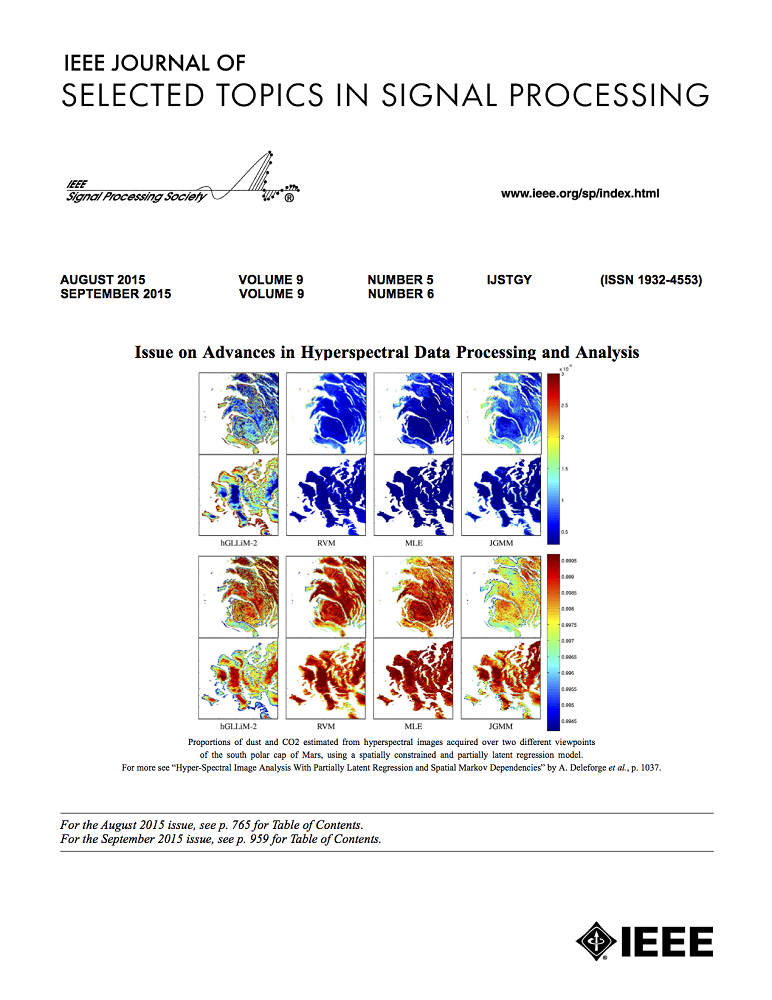Distributed Distortion-Aware Beamforming Designs for Cell-Free mMIMO Systems
IF 8.7
1区 工程技术
Q1 ENGINEERING, ELECTRICAL & ELECTRONIC
IEEE Journal of Selected Topics in Signal Processing
Pub Date : 2025-02-03
DOI:10.1109/JSTSP.2025.3537798
引用次数: 0
Abstract
Cell-free massive multi-input multi-output (CF-mMIMO) systems have emerged as a promising paradigm for next-generation wireless communications, offering enhanced spectral efficiency and coverage through distributed antenna arrays. However, the non-linearity of power amplifiers (PAs) in these arrays introduce spatial distortion, which may significantly degrade system performance. This paper presents the first investigation of distortion-aware beamforming in a distributed framework tailored for CF-mMIMO systems, enabling pre-compensation for beam dispersion caused by nonlinear PA distortion. Using a third-order memoryless polynomial distortion model, the impact of the nonlinear PA on the performance of CF-mMIMO systems is firstly analyzed by evaluating the signal-to-interference-noise-and-distortion ratio (SINDR) at user equipment (UE). Then, we develop two distributed distortion-aware beamforming designs based on ring topology and star topology, respectively. In particular, the ring-topology-based fully-distributed approach reduces interconnection costs and computational complexity, while the star-topology-based partially-distributed scheme leverages the superior computation capability of the central processor to achieve improved sum-rate performance. Extensive simulations demonstrate the effectiveness of the proposed distortion-aware beamforming designs in mitigating the effect of nonlinear PA distortion, while also reducing computational complexity and backhaul information exchange in CF-mMIMO systems.无小区mimo系统的分布式畸变感知波束形成设计
无蜂窝大规模多输入多输出(CF-mMIMO)系统已经成为下一代无线通信的一个有前途的范例,通过分布式天线阵列提供更高的频谱效率和覆盖范围。然而,在这些阵列中,功率放大器(PAs)的非线性引入了空间失真,这可能会严重降低系统性能。本文首次研究了为CF-mMIMO系统量身定制的分布式框架中的畸变感知波束形成,可以对非线性PA失真引起的波束色散进行预补偿。首先利用三阶无记忆多项式失真模型,通过评估用户设备(UE)的信噪比(SINDR),分析了非线性PA对CF-mMIMO系统性能的影响。然后,我们分别开发了基于环形拓扑和星形拓扑的两种分布式畸变感知波束形成设计。特别是,基于环拓扑的全分布式方案降低了互连成本和计算复杂度,而基于星型拓扑的部分分布式方案利用中央处理器优越的计算能力,实现了更高的和速率性能。大量的仿真证明了所提出的失真感知波束形成设计在减轻非线性PA失真影响方面的有效性,同时还降低了CF-mMIMO系统的计算复杂性和回程信息交换。
本文章由计算机程序翻译,如有差异,请以英文原文为准。
求助全文
约1分钟内获得全文
求助全文
来源期刊

IEEE Journal of Selected Topics in Signal Processing
工程技术-工程:电子与电气
CiteScore
19.00
自引率
1.30%
发文量
135
审稿时长
3 months
期刊介绍:
The IEEE Journal of Selected Topics in Signal Processing (JSTSP) focuses on the Field of Interest of the IEEE Signal Processing Society, which encompasses the theory and application of various signal processing techniques. These techniques include filtering, coding, transmitting, estimating, detecting, analyzing, recognizing, synthesizing, recording, and reproducing signals using digital or analog devices. The term "signal" covers a wide range of data types, including audio, video, speech, image, communication, geophysical, sonar, radar, medical, musical, and others.
The journal format allows for in-depth exploration of signal processing topics, enabling the Society to cover both established and emerging areas. This includes interdisciplinary fields such as biomedical engineering and language processing, as well as areas not traditionally associated with engineering.
 求助内容:
求助内容: 应助结果提醒方式:
应助结果提醒方式:


